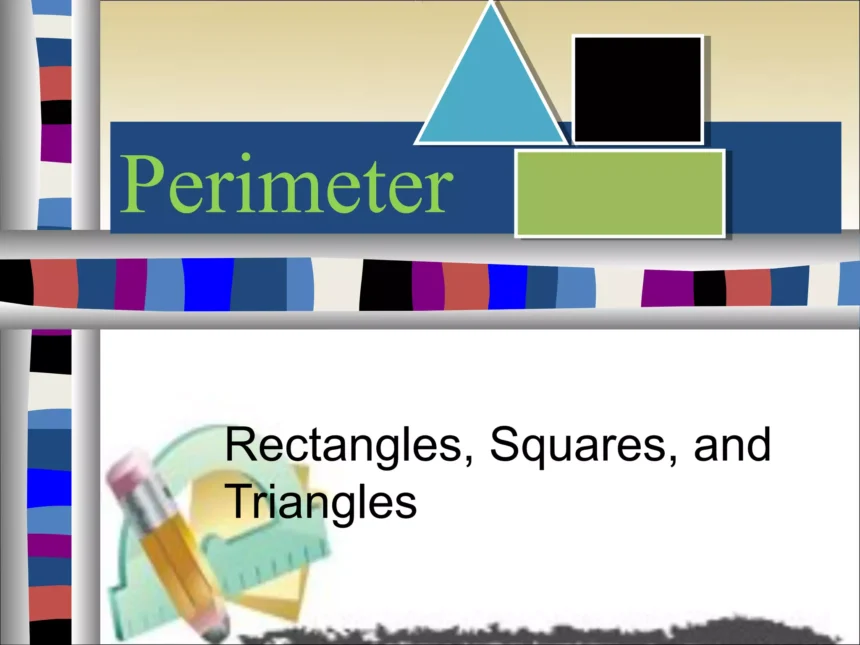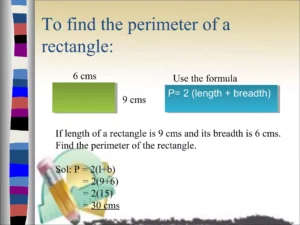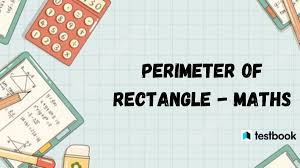When young Mia visited her grandfather’s farm one summer, she had no idea she would discover the perimeter of a rectangle in such a meaningful way. What started as a sunny afternoon walk around a field turned into an unexpected math lesson that she would never forget.
Her grandfather, a retired farmer with a gentle smile and a love for numbers, pointed to an old rectangular field on the edge of the property. The wooden fence surrounding it was falling apart, and he planned to rebuild it.
“I want to know how much fencing I need,” he said. “But first, we need to find the perimeter of this rectangle.”
Mia, who had just started learning about geometry in school, smiled and pulled out her notebook. “I think I can help!”
And so began their journey to understand more than just math — they explored how numbers tell stories, solve real problems, and bring generations together.
What Is the Perimeter of a Rectangle?
Let’s start with the basics. A rectangle is a four-sided shape where opposite sides are equal in length. It has two lengths and two widths.
The perimeter of any shape means the total distance around it. For a rectangle, this means we add up all the sides:
Perimeter = 2 × (Length + Width)
That’s it — a simple formula that tells us how far it is around the rectangle. If one side is 10 meters and the adjacent side is 5 meters, then the perimeter would be:
2 × (10 + 5) = 2 × 15 = 30 meters
So, you would need 30 meters of fencing to go all the way around.
The Field That Needed a Fence
Back at the farm, Mia and her grandfather measured the sides of the field. It was 20 meters long and 15 meters wide.
Mia wrote down the numbers and used the formula:
Perimeter = 2 × (20 + 15) = 2 × 35 = 70 meters
“Seventy meters of fence,” she said proudly. Her grandfather nodded in agreement. “Exactly. That’s how much we’ll need to buy.”
Suddenly, the idea of perimeter wasn’t just something from her math book — it was real. It had purpose. It solved a problem.
Why Perimeter Matters in Real Life
This simple story shows us that math isn’t just about numbers. It’s about how we use those numbers in everyday life.
Here are a few common situations where knowing how to calculate the perimeter of a rectangle is useful:
-
Building a fence around a yard – Just like Mia’s story.
-
Framing a picture – You need the perimeter to cut the right amount of frame.
-
Sewing or fabric work – Measuring borders or trimming.
-
Planning a room layout – Knowing how much baseboard or flooring you need.
Perimeter helps us understand space and boundaries. It helps us plan and prepare.
Perimeter of a Rectangle in the Classroom
For many students, geometry can feel abstract or confusing. But when they connect it to real-world objects — like a soccer field, a garden bed, or a bedroom wall — suddenly, it clicks.
Teachers often use the perimeter of a rectangle to introduce students to practical problem-solving. It’s a great entry point because the math is simple, but the concept is powerful.
Let’s take another quick example. Imagine you have a rectangular school playground that is 50 meters long and 30 meters wide. To place a fence around it, how much fencing would you need?
Perimeter = 2 × (50 + 30) = 2 × 80 = 160 meters
Now imagine that you want to put a rope around a rectangular art display that’s just 3 meters long and 2 meters wide. The perimeter would be:
2 × (3 + 2) = 2 × 5 = 10 meters
Whether big or small, rectangles are everywhere.
Deeper Look: What If the Shape Changes?
Mia had another question for her grandfather. “What if the field wasn’t a rectangle? Would the formula still work?”
“Good question,” he replied. “The formula we’re using only works for rectangles. If the shape changes, we have to change the way we calculate the perimeter.”
For example, a triangle or circle has a different perimeter formula. This is why understanding why the rectangle formula works is important — because we are counting two lengths and two widths.
That day, Mia learned that math isn’t just about memorizing formulas. It’s about understanding shapes, patterns, and relationships.
Mia’s New Perspective
By the end of the day, Mia was tired but happy. She had walked around the field, learned how to measure sides, and used math to solve a real problem.
More importantly, she saw the power of simple numbers. The perimeter of a rectangle wasn’t just an equation. It was part of her grandfather’s world — a tool that helped build, plan, and protect.
She went home and told her teacher about the experience. From then on, whenever she saw a rectangle, she didn’t just see a shape. She saw possibilities.
Conclusion: Math Is a Story Waiting to Be Told
The perimeter of a rectangle may seem like a basic concept. But behind every formula is a story — a reason, a memory, a real-life application.
Whether you’re helping a grandparent fix a fence, measuring your room for a new carpet, or just doing homework, remember that math has meaning.
And the next time someone asks what the perimeter of a rectangle is, don’t just give them the formula. Tell them a story.
Because sometimes, the best way to learn math… is to live it.







